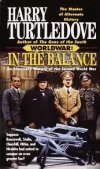World War II Navy and Marine Corps fighters.
As we all probably recollect, on December 7, 1941, the standard Navy fighter was the Grumman F4F-3 Wildcat. (There were also a few squadrons still equipped with Brewster F2A Buffalo fighters, but they transitioned to F4Fs quickly.) Carrier Air Groups included a single VF with 18 aircraft. Grumman was working on a folding wing concept for the F4F and the Navy planned to expand VFs to 27 aircraft each once deliveries started.
The performance of the Mitsubishi A6M type Zero carrier fighter came as an unpleasant surprise to the Allies. Japanese fighter pilots had already been blooded in China and were very good. But the Americans soon took the advantage with tactical innovations, such as replacement of the three-aircraft division with the four-aircraft division with two sections of two F4Fs each. The Thach weave lessened U.S. losses, as did the sturdy construction of the Grumman aircraft and protective measures such as armor and self-sealing fuel tanks. U.S. pilots soon realized that the Japanese aircraft were relatively vulnerable with lightweight construction and minimal protective measures.
While the Navy had new fighters in test and on the drawing boards, the F4F Wildcat had to hold the line for about a year and a half until new aircraft were ready. When the Grumman Sto-Wing folding wings were introduced, carrier squadrons expanded to 27 Wildcats each. The need for protection of our own carrier groups and simultaneous escort of strike aircraft drove that number to 36 later in 1942.
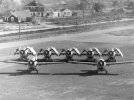
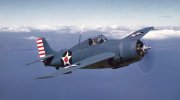
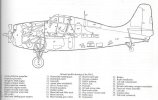
The planned replacement for the F4F was the Vought F4U Corsair, which first flew in May of 1940. Development was troubled. Although the Corsair demonstrated excellent potential, it took quite a while before production deliveries began; the first production F4U-1 was not delivered until July of 1942. The first squadron of Corsairs, VMF-124, got their new aircraft in September of 1942. In the same month, carrier tests of the F4U-1 revealed a number of issues. Although two Navy squadrons were issued F4Us, carrier operations were limited.
By February of 1943, VMF-124 was on Guadalcanal and flying combat missions in F4U-1s. More Marine squadrons followed. The two Navy F4U squadrons were deployed to combat as land-based squadrons alongside their Marine counterparts.
Unlike the full-figured Grummans that had fuel tanks under the cockpit, The Corsair had the fuel in a tank in front of the pilot and thus was slimmer. It also featured a gull wing to minimize main landing gear length and allow for a large-diameter prop for the powerful R-2800 engine.
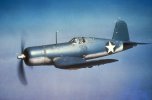
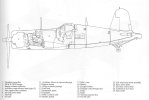
The Navy was hedging its bet on fighters. It also contracted with Grumman for a new-generation fighter using the same R-2800 power as the F4U. The new XF6F Hellcat first flew in June of 1942. Development was relatively untroubled and the first production F6F-3 came off the line in October. By January of 1943, Hellcats were delivered to VF squadrons and carrier-based F6Fs first drew blood in August of 1943. The Hellcat rapidly replaced Wildcats on fleet carriers, although F4Fs (and similar Eastern FMs) continued to fly from escort carriers.
By comparison with the F4U, the F6F was slightly larger. Fuel capacities were the same, but the F6F fuel tanks were below the cockpit. The weights of the Corsair and Hellcat were quite close and the power output the same. The F4U had a slight speed advantage. For a year and a half, the F4U was kept off the fleet carriers and thus most Marines flew F4Us while the Navy flew F6Fs.
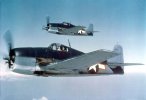
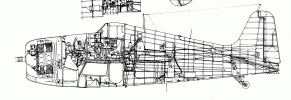
There the situation remained until late 1944 when the Kamikaze attacks started. Suddenly Navy leadership decided that air defense of the carrier groups had to be greatly augmented. There were not enough F6Fs to accomplish the task and the F4U was brought aboard the carriers in large numbers. The number of fighters per fleet carrier was rapidly increased to 73. Marine squadrons were hastily carqualed and assigned to air groups. Scout bomber and torpedo bomber squadrons were reduced in size in compensation.
At the same time, Navy fighter squadrons began to transition to F4Us. By this time, too, the F4U had been fitted with a C-series R-2800 and four-blade prop for better performance. The F6F was tested with the same configuration but the decision was made to keep the F6F production line humming (at almost 600 aircraft per month!) and commit to the improved F4U-4. A number of Navy and Marine squadrons took the -4 into combat in 1944-45.
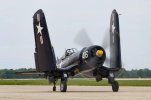
In a footnote, the Wildcat remained in production into 1945 for use on CVEs, but was quicky retired after the end of the war.


